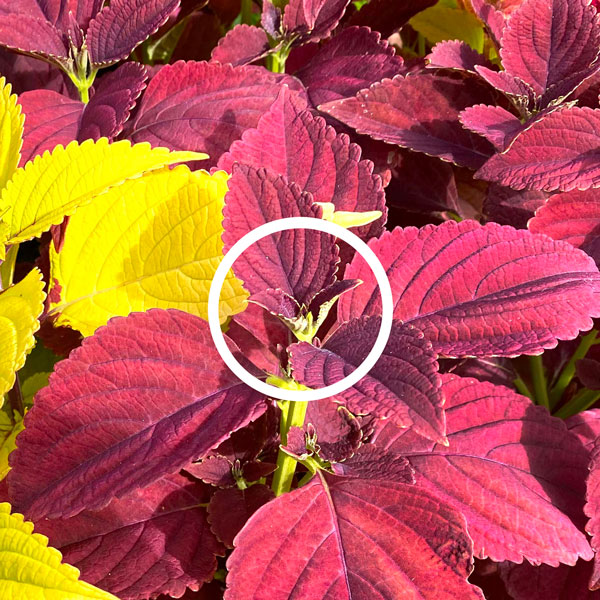Here’s the price we pay
When you’re growing coleus, you’re growing it for its colorful leaves. The same goes for caladiums. If it’s lamb’s ears, it’s for the large, fuzzy gray leaves that look and feel like, well, lamb’s ears. And when you’re growing basil, you have it for its culinary delights.
In none of those cases do you grow those plants for flowers. Flowers are actually your enemies because they stop the plants from producing more leaves.

That’s why coleus breeders started selecting varieties decades ago that were reluctant to bloom. At first there were 25 or 30 that stayed in the trade for decades. But only a few new ones came along every few years to add to the list.
Those numbers have ramped up hugely in the past 25 years, so much so that you can hardly keep up anymore. It seems like there are several dozen new varieties or even collections of varieties in the market each year.
The big search has been to find coleus that could withstand full sun in the landscape all summer. Growers have been successful in finding us those.

The next frontier has been to select for types that were reluctant to bloom. That journey has been longer. Some, like the one in my photo, started sending out flower stalks by late summer. That’s when the new growth stopped.


There is a solution to that. If you remove the flower buds as soon as you see them starting to form (while they’re still no larger than a pencil eraser – see circled examples in photo), and if you take a couple of sets of leaves with them, you’ll be back into growth that is still completely vegetative. Those side shoots will start growing vigorously. Your plants will stay short and compact the rest of the season.
This is a quick and easy process. It’s amazing how perfectly groomed you can keep your plants looking from spring until frost just by pinching their growing tips a couple of times every summer and fall.
